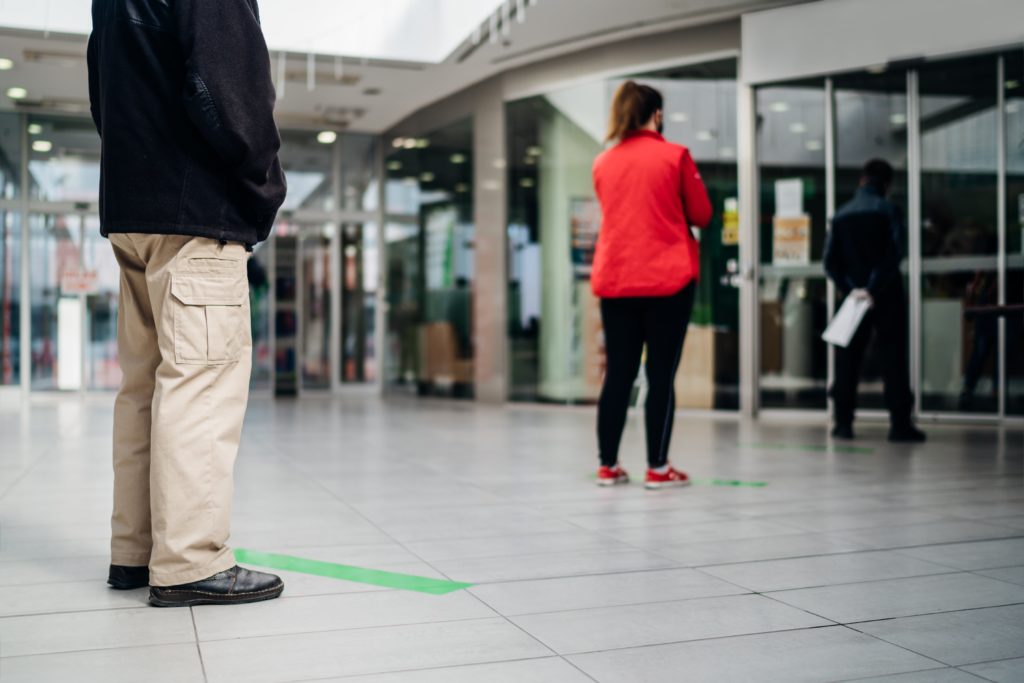Features - Development
How Covid will Affect the Future of Public Spaces

Robin Barber, product owner of built environment at Arcus Global, explores how Covid will affect the way public spaces are designed and used in the long term.
The days of cramming into a packed shop or willingly standing like sardines by a busy bar have been over for some time. Shops are implementing queuing systems outside the store fronts. City centre roads have been narrowed or shut to allow cafes to extend outdoor dining spaces into the street. Floor stickers to remind us of the need to keep two metres away from others are abundant.
These temporary accommodations have allowed for social distancing, but what happens now that sunny days are rare, daylight hours are shorter and the weather is worsening? We have seen the proposed reforms in the ‘Planning for the Future’ whitepaper. They are all well and good, but I believe particular attention should be paid to how Covid will affect the way public spaces are designed in the future. We cannot pretend that it won’t.
Designing future public spaces
Now that many city centre roads have been closed to accommodate social distancing, the benefits have been numerous and the changes are already being maintained as permanent in many places. In the West country, The Bristol Street Space programme has been developed to offer more space and support local businesses, part of an existing wider initiative to make the city centre more accommodating for pedestrians. This programme, currently in its initial six-month trial period, has been hailed as an early success. Arrangements for street closure were completed in a matter of weeks.
Low-cost and scalable adaptations can play a big role in shaping and implementing pilot projects that will shift into a permanent rethink of how we interact and live. For these initiatives, the involvement of all stakeholders across the entire process is essential. Citizens, local businesses, councils and the tech companies they collaborate with to implement new measures, all have a vested interest in making changes work in the long term.
Housing developments for future needs
City centres aside, we can’t forget that new housing developments are not immune to the change either. We will now have to think about the way in which we construct spaces for new homes. Will housebuilders now need to rethink the habit of cramming as many homes into as small a space as possible? I think so.
No-one will doubt the care many house builders take in optimising the space available for new homes, but priorities may now have to change. It’s a known fact that illness spreads more easily in areas with a denser population, and developments where people cannot walk and go about their daily lives at a safe distance from strangers should not continue as the norm. Not to mention the design of the houses themselves, which will have to accommodate a large number of people now working from home on a much more regular basis. In fact, ONS figures from October show almost a quarter of employees now exclusively working from home.
One of the problems in the recent whitepaper is that design seems not to be taken into account. This isn’t about fashion versus function. It’s about building spaces based on how people will actually use them in the future.
What planners can do
Accessibility has never been so high up on the agenda – we now live in a hugely changed society, and our previous approach to public spaces isn’t something that I would want to return to. Everyone from planners to registrars is working to improve spaces for local citizens, so why would we abandon that to go back to something that is familiar, but ultimately less safe? If we prioritise flexibility and accessibility, then we know that public spaces can adapt and improve.
Planners and housing developers need to start thinking of how Covid – which is not going away completely any time soon – will affect the use of their spaces in the future. Designing larger spaces and accommodating for social distancing could well become the norm, so local plans should absolutely reflect that shift. Zoning and categorising are one thing, but the devil is in the detail, after all. We should not only design our local places with buildings in mind – physical space and the people moving through it should be considered too.
To do this, a cloud-based digitally enabled process from start to finish is a vital ingredient. Digitising planning processes can lead to the faster development of these radically different public spaces. As we’ve all found from this year, speed is of the essence in changing public spaces to adapt to the pandemic.
Look more closely at existing spaces and how they can be permanently adapted for the post-Covid world. Can those street closures become permanent? Can we hand the city centres back from heavy traffic over to pedestrians once and for all? Can we rethink the way we design our local places so that space, not profit, is the priority? Which tech can we use to speed up the process? Work has to begin now.
Related Articles
More Features
- Why early MEP design collaboration holds the key to smarter buildings
24 Jun 25
Working closely is essential to ensure that all aspects of a building’s design contribute to
- Risk Vs Reward: Labour’s ambitious plans for stalled housing developments
10 Jun 25
Labour’s plans to allow local authorities to take control of stalled housing sites signals bold
- Insight: Digitalisation and the future of low-carbon housing
23 May 25
Digitalisation is reshaping homes, playing a pivotal role in reducing carbon emissions and enhancing energy






